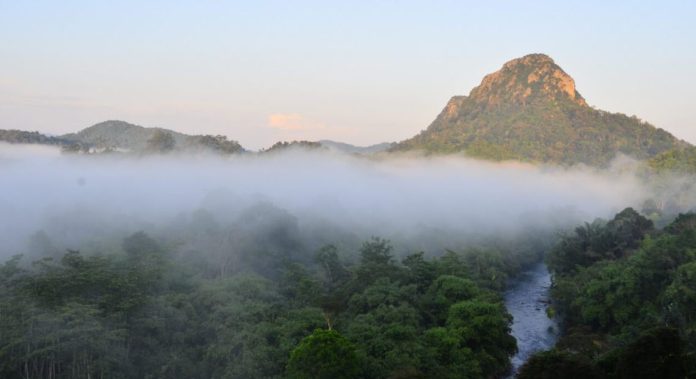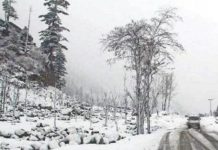UNESCO has just added 16 new geoparks to its global network, bringing the total to 229 across 50 countries. Celebrating its 10th anniversary this year, the UNESCO Global Geoparks Network acknowledges territories with a rich geological heritage, whether that be rock formations, mountain or volcanic ranges, caves, canyons, fossil sites or ancient desert landscapes.
Among the newly designated geoparks is Mt Paektu, the first geopark from North Korea, and North Riyadh and Salma, the first two from Saudi Arabia.
“In ten years, UNESCO Geoparks have become models for the conservation of geological heritage. But their role goes much further: they support educational projects, promote sustainable tourism and keep the knowledge and traditions of these territories alive through the active participation of local and indigenous communities. This is the case, for example, in Iceland’s Katla Geopark, where local schools are actively involved in the scientific research that is carried out on this landscape, which preserves the memory of volcanic and glacial systems through its lava flows and black sand beaches,” said Audrey Azoulay, Director-General of UNESCO.
The full list of newly-added UNESCO Global Geoparks is as follows:
Kanbula UNESCO Global Geopark, China

Kanbula geopark is found on the northeast margin of the Qinghai-Tibet Plateau (Hao Danmeng / Kanbula Geopark)
Found on the northeast margin of the Qinghai-Tibet Plateau, highlights at the Kanbula UNESCO Global Geopark include the Maixiu volcanoes and the Yellow River, which is the sixth longest in the world. Within the geopark, a traditional Tibetan Thang-ga mural at the 14th-century Longwusi Monastery tells the story of Earth’s evolution, as it depicts the rise of mountain peaks, volcanic eruptions and the arrival of oceans.
Yunyang UNESCO Global Geopark, China
Yunyang is best known for its ‘Great Wall of Dinosaur Fossils’ (Yunyang UNESCO Global Geopark)
Located in southwest China, Yunyang is best known for its ‘Great Wall of Dinosaur Fossils’. Stretching 18 kilometres, the area is packed full of fossils dating back nearly 170 million years. The geopark is also home to one of the world’s deepest sinkholes, which plunges 335 metres, and distinctive karst landscapes.
Napo Sumaco UNESCO Global Geopark, Ecuador
Sumaco Volcano is one of the highlights in this geopark (Geoparque Napo Sumaco)
Located in Ecuador’s Amazon Basin, Napo Sumaco geopark’s highlights include the Sumaco Volcano, which has a rare composition and karst formations which researchers are making use of to study climate change through cave formation analysis. Rich in terms of geology and biodiversity, the area is also home to more than 6,000 plant species and a number of rare animal species not found anywhere else in the world.
Tungurahua Volcano UNESCO Global Geopark, Ecuador
Pailón del Diablo is found within the geopark (Geoparque Volcán Tungurahua)
Found in the Ecuadorian Andes, this geopark is centred around the Tungurahua Volcano, which is known for its mineral-rich thermal springs. Alongside the still-active volcano, the landscape of the geopark includes deep canyons, crystal-clear rivers, icy waterfalls and towering rock walls.
Kebumen UNESCO Global Geopark, Indonesia
Caves and underground rivers are found throughout this Indonesian geopark (Hudi Wasono)
Found on the Indonesian island of Java, the rocks within the Karangsambung site illustrate plate tectonic theory, showing how an ancient ocean floor was pushed up to the surface. Fossils from prehistoric ecosystems have been found throughout the areas, as well as caves and underground rivers.
Meratus UNESCO Global Geopark, Indonesia
Kantawan Hills is found within Meratus Geopark (Meratus Geopark Management Board)
Home to the oldest ophiolite series (a section of earth’s oceanic crust) in Indonesia, and plenty of diamonds, this geopark is used as a record of the tectonic evolution beginning in the Jurassic period, 201 to 145 million years ago. Another geopark with rich biodiversity, the area is home to varieties of orchids such as moon orchids and sugarcane orchids, and the once-endangered Bekantan long-nosed monkey.
MurGEopark UNESCO Global Geopark, Italy
Around 25,000 dinosaur footprints were found in the Dinosaur Quarry of Altamura (Domenico Martinelli)
MurGEopark in Italy’s Murge Highlands earned its place on UNESCO’s list as it features a rare, stable portion of the Adriatic Plate between Africa and Europe. Marked by sinkholes, caves, and lamas (wide furrows formed by water erosion), paleontologists have made significant discoveries here included a preserved Neanderthal skeleton and one of the world’s largest dinosaur track sites, with approximately 25,000 footprints.
The Fjord Coast UNESCO Global Geopark, Norway
Laukelandsfossen Waterfall has a 135m drop (Visit FjordKysten & Sunnfjor)
The Fjord Coast UNESCO Global Geopark, found at the westernmost point of Norway where the Sognefjord meets the Northern Sea, offers the chance for scientists to study the rise and fall of a the ancient Caledonian mountain range. Home to the lowest-lying glacier in Scandinavia, the landscapes is full of islands, fjords and cascading waterfalls.
Mt Paektu UNESCO Global Geopark, North Korea
The Millennium Eruption of Mt Paektu created Lake Chon, a caldera lake (Ri Hyon Song _MPGMC)
The first Global Geopark in North Korea, Mt Paektu was the location of one of the largest eruptions in recorded history – the Millennium Eruption – and a key site for understanding the stages of volcanic eruptions thanks to the aftermath, which created hot springs, carbonised trees and rising magma channels in the Janggun Peak laccolith.
Danyang UNESCO Global Geopark, South Korea
Gudambong Peak, or Turtle Pond Peak, is so named because the reflection of its cliffs on the lake below supposedly look like a turtle (Danyang Geopark)
Lying along the Baekdu Daegan mountain range, the Danyang UNESCO Global Geopark in South Korea is a key site for understanding early human history in East Asia. Alongside many prehistoric cultural relics, Danyang is home to granite gneiss, limestone, quartzite and sandstone, which reflect the region’s tectonic evolution.
Gyeongbuk Donghaean UNESCO Global Geopark, South Korea
Naeyeonsan Bogyeongsa Municipal Park is famed for its 12 waterfalls (Gyeongbuk Donghaean Geopark)
Located on the southeastern coast of Gyeongsangbuk-do, the Gyeongbuk Donghaean UNESCO Global Geopark is home to Deokgu Valley, known for its ancient granitic rocks and hot springs, as well as the Seongryugul Limestone Cave, which stretches 870 metres long, and the Yangnam Columnar Joints, which were created when volcanic lava cooled and contracted.
North Riyadh UNESCO Global Geopark, Saudi Arabia
Saudi Arabia joins the UNESCO Global Geopark network for the first time in 2025 (Eng. Hussam Turki / North Riyadh Geopark)
The Tabletop Mountains, so-called for their flat-topped peaks, are the centrepiece of this geopark in North Riyadh, as the Jurassic-Cretaceous rock formations provide the geological foundations for Saudi Arabia’s petroleum heritage. Other highlights include Wadi Obaitharan, which sustains the region’s water supply and is home to ancient coral reef systems.
Salma UNESCO Global Geopark, Saudi Arabia
Visitors to this geopark can see Al-Hutaymah Crater (Abduleilah Alrawdhan / National Center for Vegetation Cover & Combating Desertification)
Located near Hail in northwestern Saudi Arabia, Salma UNESCO Global Geopark features volcanic and magmatic rocks dating back over 740 million years. Here, you can visit the Al-Hutaymah Crater, which was formed by volcanic eruptions and erosion over millennia. On the wildlife front, you can see the endangered Nubian ibex and Arabian oryx here, too.
Costa Quebrada UNESCO Global Geopark, Spain
Arnía Beach tells the story of a coastline in constant change (Xisco Unzué)
The exposed sea cliffs and sandy beaches of Costa Quebrada UNESCO Global Geopark tell the story of a coastline in constant change, having been formed by tectonic movements that pushed mountains up from the seabed to form highlands that were then sculpted by wind and water.
Arran UNESCO Global Geopark, UK
Arran is a popular spot for walking (Corinna Goeckeritz)
Arran, an island off the southwest coast of Scotland, has also joined UNESCO’s geoparks network. The landscape is a result of tectonic plate collisions, the opening of the Atlantic Ocean and the sculpting of alpine mountains by glaciers. Here, you’ll find the Arran whitebeam, one of the world’s rarest and most endangered tree species, as well as more than 156 bird species and 1,000 plant species.
Lang Son UNESCO Global Geopark, Vietnam
Lang Son UNESCO Global Geopark is found in northern Vietnam (Nguyen Minh Duc)
Lang Son UNESCO Global Geopark in northern Vietnam is home to a number of key geological sites, including the Na Duong basin, where fossils have been found that provide insights into how mammals moved between continents, as well as Bac Son Limestone Massif, where stone tools, ceramic artifacts and burial sites from some of Vietnam’s earliest human inhabitants have been found.
































